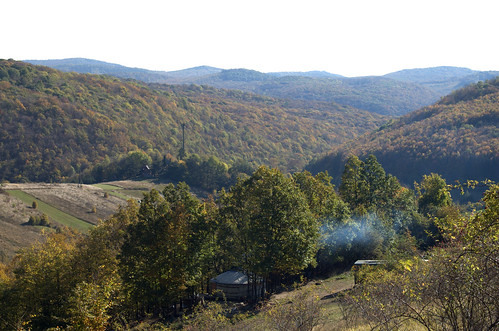 Eger sits right in between two of Hungary's few mountain ranges - the Bükk and the Mátra.
Eger sits right in between two of Hungary's few mountain ranges - the Bükk and the Mátra. If you are heading north through the town, if you turn left off the main road you will be in the Mátra, and if you turn right you will be in the Bükk.
Even though neither of them are very high, they are both very nice, especially after having suffered through years of living in the "alföld" (the plains) in Debrecen - which for a mountain boy was like a slow painful death on the inside.
This past weekend we went for a drive with Shane and Marianna, through the Bükk to enjoy the fall and the changing of the leaves.
 On the way, we visited one of my favorite villages - Répáshuta, also known by its Slovak name: Répášska Huta, as this is one of only a few villages in Hungary with a significant ethnic Slovak population.
On the way, we visited one of my favorite villages - Répáshuta, also known by its Slovak name: Répášska Huta, as this is one of only a few villages in Hungary with a significant ethnic Slovak population.In Hungarian, the word "kisebbség" (minority) is usually used as an offhand way of referring to Gypsies, since they are the largest minority group in Hungary. There are however other national minority groups in Hungary, but their populations are quite small.
At one time, it would not have been anything special to find villages in Hungary with ethnic minorities in them. Hungary used to be a bigger place, with many different nationalities.
If you talk to any Hungarian for more than 10 minutes, there is a pretty good chance that you are going to hear about the Treaty of Trianon - a peace treaty made at the end of World War I, in which the Great Powers divided up the teritory of the Kingdom of Hungary (on the losing side of the war). As a result, Hungary lost about two-thirds of its territory, and new borders were drawn according to ethnic lines.
Here's a map of the "distribution of races" in Austria-Hungary in 1911:
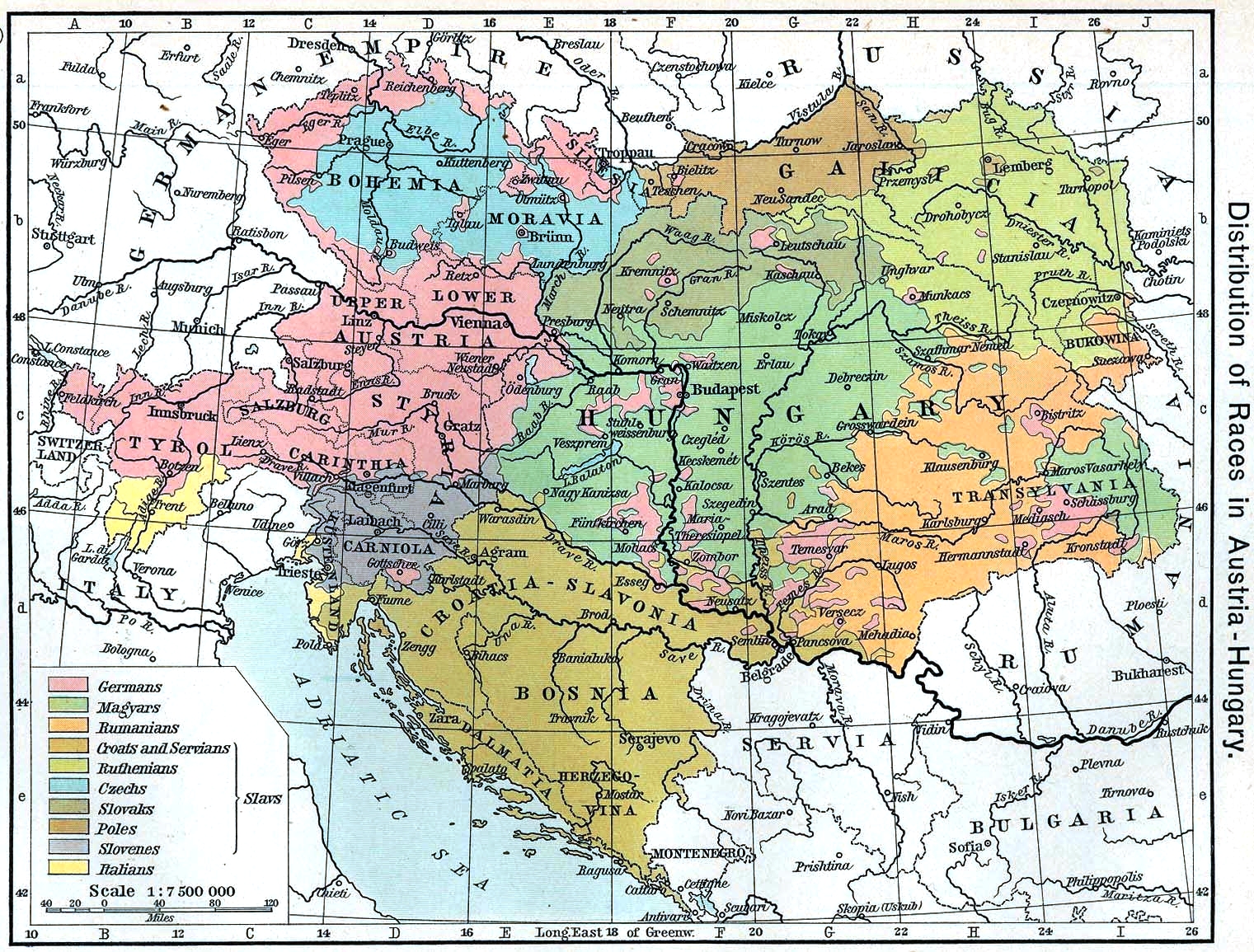 You can see from the map, that the nations which were formed after WWI, were formed for the most part along ethnic lines - with a few exceptions.
You can see from the map, that the nations which were formed after WWI, were formed for the most part along ethnic lines - with a few exceptions.One of these exceptions was the Germans living in what became Czechoslovakia, and the other is the Hungarians who ended up outside of the borders of Hungary, in almost all of the newly formed countries - leaving Hungarians as the largest national minority population in Europe, but leaving almost no ethnic minorities in the new Hungarian state, as you can see in this post-WWI map:

Even now, almost a hundred years after Trinanon, you can go across the borders of Hungary and find significant Hungarian populations in all the surrounding countries. Which, from our point of view is kind of nice, that we can travel for quite a ways outside of Hungary and still get by many times using Hungarian.
These exceptions - the Germans in the Sudetenland and the Hungarians outside of Hungary led to problems in WWII.
And getting back to Slovaks - Hungary and Czechoslovakia were on opposite sides during WWII - Hungary was Axis and Czechoslovakia was Allied. As a result, Czechoslovakia issued the Beneš decrees, which declared the Hungarians (and Germans) living in their country to be traitors and enemies of the state, which led to much of their land being confiscated. This led to a "population exchange", in which about 70,000 Slovaks from Hungary were "relocated" to Slovakia and 70,000 Hungarians from Slovakia were transplanted in Hungary. Thus, a country which was already very homogeneous, became even more so, as most of the Slovak population left.
 Today, the estimated population of Slovaks in Hungary is around 50,000.
Today, the estimated population of Slovaks in Hungary is around 50,000.That's why Répášska Huta is such an interesting place in Hungary - a village where half the population is Slovak and 38% speak the Slovak language as their mother tongue.
Besides all this stuff, its also just a cute little village tucked away in the mountains, and a great place to visit.
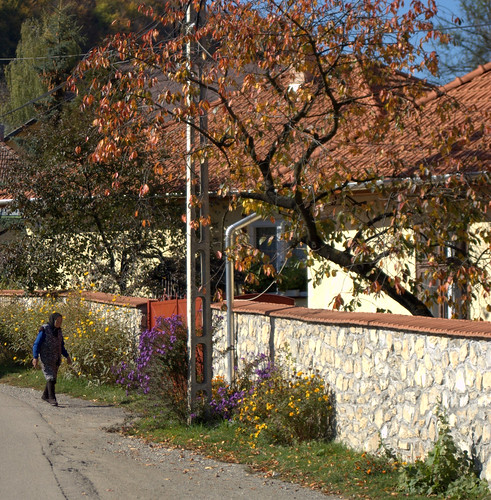
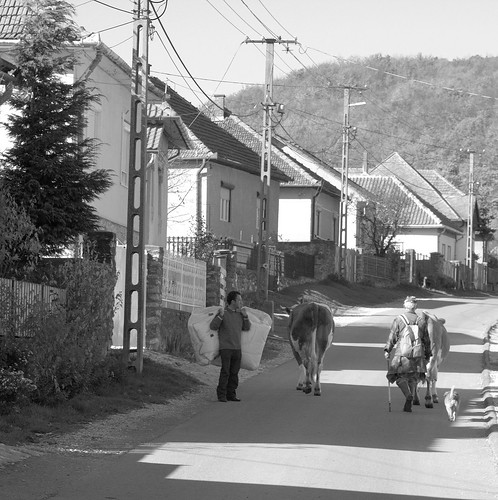
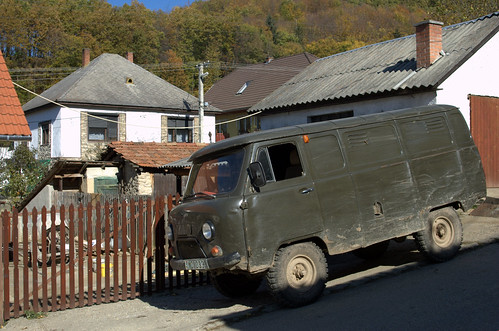
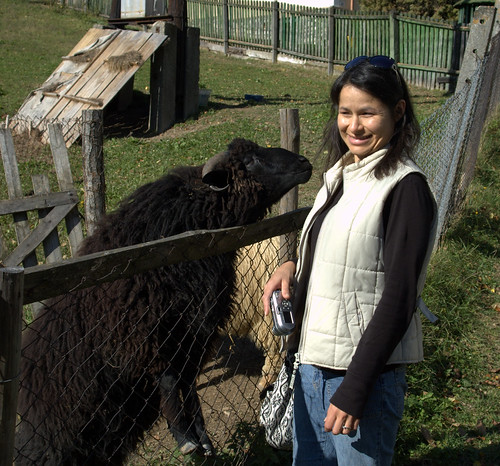
very nice and informative summary. you are very good at this, mountain boy :)
ReplyDeletei felt like i was reading a history book in high school, so it was a bit dry and boring, except for the picture of the black boy trying to kiss Rosemary! Is that Rosemary's van from her rocker chick days?
ReplyDeleteYea, I find this stuff interesting and I like to read about it, but I know that not everyone does!
ReplyDeleteBut just so you know - I actually deleted a whole section about minority local self-governments, because I figured that would be crossing the line into being extremely boring for most people.
As far as the van - that would make a great rocker van. Its an UAZ - a Russian military vehicle used for transporting soldiers. I would be pretty cool to have one, and I think it would only cost like 3 goats and couple chickens up in that village.
But if I actually had money for a second car, I think I'd buy a Lada Niva.